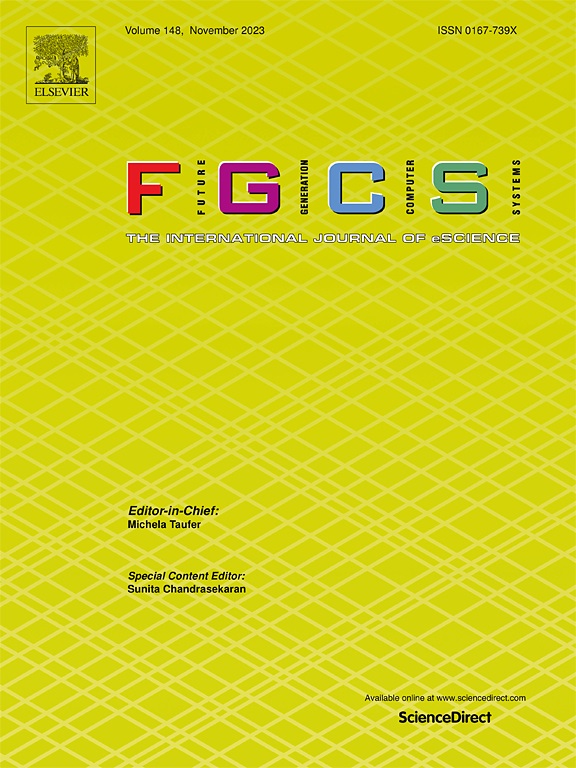Hybrid fuzzy grammar dynamic graph diffusing attention network for traffic flow prediction
IF 6.2
2区 计算机科学
Q1 COMPUTER SCIENCE, THEORY & METHODS
Future Generation Computer Systems-The International Journal of Escience
Pub Date : 2025-01-27
DOI:10.1016/j.future.2025.107725
引用次数: 0
Abstract
Accurate and real-time traffic flow prediction is an indispensable part of the intelligent transportation system and is essential in improving traffic planning capability. However, due to the highly nonlinear and spatiotemporal fluctuation characteristics of the large-scale traffic network data, it is a challenging issue to establish an accurate and effective prediction model. In this regard, a hybrid fuzzy grammar dynamic graph diffusing attention network is proposed for traffic flow prediction. Firstly, the network utilizes the grammar network structure composed of grammar rules to synchronously capture the interactive information of observable traffic parameters and the dynamic spatio-temporal correlation of each node. Secondly, the network utilizes an improved graph attention network for spatio-temporal node aggregation and dynamic edge information extraction, effectively mitigating over-smoothing. Finally, the network combines hidden features captured by the grammar structure with the change rate of the traffic flow through the fuzzy network to deduce the blend of hidden features of observable and unobservable information. Simulation results on three real datasets show that the proposed model outperforms existing prediction methods under traffic networks.
求助全文
约1分钟内获得全文
求助全文
来源期刊
CiteScore
19.90
自引率
2.70%
发文量
376
审稿时长
10.6 months
期刊介绍:
Computing infrastructures and systems are constantly evolving, resulting in increasingly complex and collaborative scientific applications. To cope with these advancements, there is a growing need for collaborative tools that can effectively map, control, and execute these applications.
Furthermore, with the explosion of Big Data, there is a requirement for innovative methods and infrastructures to collect, analyze, and derive meaningful insights from the vast amount of data generated. This necessitates the integration of computational and storage capabilities, databases, sensors, and human collaboration.
Future Generation Computer Systems aims to pioneer advancements in distributed systems, collaborative environments, high-performance computing, and Big Data analytics. It strives to stay at the forefront of developments in grids, clouds, and the Internet of Things (IoT) to effectively address the challenges posed by these wide-area, fully distributed sensing and computing systems.

 求助内容:
求助内容: 应助结果提醒方式:
应助结果提醒方式:


